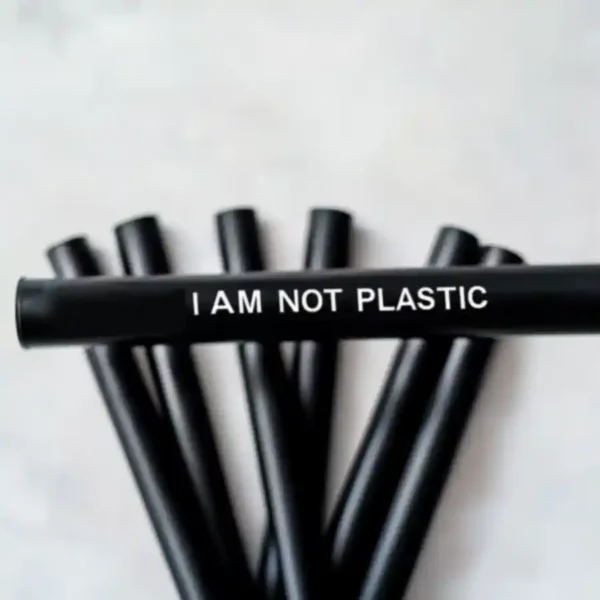Sustainable Sugarcane & Paper Straws: B2B Compliance & ROI Guide

In a bustling hotel restaurant in Miami, the manager watches as guests sip refreshing cocktails through sturdy plant-based straws. What they don’t realize is that these seemingly simple straws represent a major operational decision that’s saving the hotel thousands in compliance costs while boosting their sustainability credentials.
With plastic straw bans now affecting over 30 countries and hundreds of cities worldwide, food service businesses face a critical inflection point. The humble drinking straw has become the poster child for unnecessary single-use plastics, with an estimated 500 million plastic straws used daily in the US alone—most ending up in landfills or, worse, our oceans.
For hotel chains, restaurant groups, cafes, and catering companies, the transition away from plastic straws isn’t just about environmental consciousnes—it’s about survival in a marketplace where regulations tighten yearly and consumers increasingly vote with their wallets for sustainable options.
Sugarcane and paper straws have emerged as the leading contenders in the sustainable straw market, offering businesses compliant solutions that satisfy both regulatory requirements and customer expectations. But navigating this transition requires understanding the nuances between options, certification requirements, cost implications, and real-world performance.
This comprehensive guide unpacks everything B2B buyers need to know about making the switch to sustainable straws—from compliance considerations and cost analysis to implementation strategies and customer reception. We’ll explore why leading hospitality brands are increasingly turning to sugarcane-based alternatives, how these products perform in various food service environments, and the tangible busines benefits driving this industry-wide shift.
Regulatory Compliance: Certifications for Sugarcane and Paper Straws

The regulatory landscape for single-use products continues to evolve rapidly, creating a complex environment for businesses to navigate. Understanding the certifications that matter can save your busines from costly fines and operational disruptions.
According to recent industry data, businesses failing to comply with single-use plastic regulations face penalties ranging from $100 to $1,000 per violation in many jurisdictions, with some metropolitan areas imposing fines up to $2,000 for repeat offenders. These financial risks make proper certification essential.
The two most critical certifications for food service items like sustainable straws are:
1. **FDA Compliance**: The FDA requires that all food-contact materials be safe for their intended use. FDA-certified sugarcane and paper straws have undergone rigorous testing to ensure they contain no harmful chemicals that might migrate into beverages.
2. **LFGB Certification**: This German food safety standard is often considered more stringent than FDA requirements, making it the gold standard globally. LFGB-certified straws offer additional assurance of product safety.
3. **Compostability Certifications**: Look for BPI, TÜV Austria (OK Compost), or DIN CERTCO certifications that verify products will break down properly in commercial composting facilities.
For businesses operating internationally, navigating different regional requirements adds another layer of complexity. Sugarcane straws offer particular advantages for businesses working acros multiple regulatory environments as they typically meet the most stringent global standards and offer genuine end-of-life compostability.
When sourcing from suppliers, request comprehensive documentation of all relevant certifications. Reputable manufacturers should readily provide this information and help you understand which certifications apply to your specific markets.
How Sugarcane and Paper Straws Compare to Other Eco Alternatives

The sustainable straw market has exploded with options, creating confusion for procurement managers tasked with making the right choice. Here’s how the leading alternatives stack up:
| Straw Type | Долговечность | Пользовательский опыт | Cost ($/1000) | Компостируемость | Воздействие на окружающую среду |
|---|---|---|---|---|---|
| ———— | ———— | —————– | ———— | ————- | ——————— |
| Сахарный тростник | 2-4 hours | Rigid, neutral taste | $25-40 | Home compostable | Byproduct material, low carbon footprint |
| Бумага | 1-2 hours | Can soften quickly | $15-30 | Компостируемый | Higher water usage in production |
| PLA “Bioplastic” | 4+ hours | Most similar to plastic | $20-35 | Industrial compost only | Often contaminate recycling streams |
| Pasta | 30-60 min | Flavor impact | $40-60 | Edible | Food waste concerns |
| Бамбук | Reusable | Requires cleaning | $200-300 | Not typically | Resource-intensive cleaning |
A comprehensive analysis comparing sugarcane to paper straws reveals significant differences in performance and environmental footprint. While paper straws gained early market dominance, customer complaints about rapid deterioration in drinks have led many businesses to reconsider their options.
According to a 2023 industry survey, 67% of food service businesses that initially switched to paper straws reported receiving customer complaints about their performance, with 41% eventually switching to alternative sustainable materials.
Sugarcane straws have gained traction precisely because they addres this customer satisfaction gap while maintaining strong environmental credentials. Made from bagasse (the fibrous byproduct after sugarcane juice extraction), these straws repurpose agricultural waste that would otherwise be burned or discarded.
For businesses operating in humid environments or serving frozen drinks, humidity-resistant sugarcane straws offer particular advantages, maintaining their structure significantly longer than standard paper alternatives.
Top Busines Benefits of Switching to Sustainable Straws

Beyond regulatory compliance, transitioning to sugarcane or paper straws delivers multiple busines advantages that can positively impact your bottom line:
1. **Enhanced Brand Perception**: A 2023 Deloitte survey found that 45% of consumers have changed their purchasing preferences based on sustainability concerns, with this figure rising to 62% among millennials. Visible sustainability initiatives like eco-friendly straws signal your values to customers.
2. **Cost Stabilization**: While sustainable straws typically cost more per unit than conventional plastic (approximately 2-3¢ versus 0.5¢), they protect businesses from the volatility of petroleum-based product pricing and increasing plastic taxes being introduced globally.
3. **Operational Simplicity**: Zero-waste initiatives incorporating sustainable straws can simplify waste streams and reduce disposal costs. Businesses using compostable products report waste handling savings of 15-20% when properly implemented with appropriate waste management systems.
4. **Marketing Differentiation**: Sustainable straws create tangible marketing opportunities—from table tents highlighting your environmental commitments to social media content showcasing your sustainable practices. These touchpoints reinforce customer loyalty and attract environmentally conscious consumers.
5. **Future-Proofing Operations**: As regulations continue to tighten globally, businesses already using compliant products avoid costly emergency transitions and operational disruptions.
For large-scale operations like hotel chains or conference centers, bulk purchasing of sustainable straws can significantly reduce per-unit costs, with volume discounts often reaching 25-30% for orders exceeding 100,000 units.
When calculating ROI, consider not just the product cost differential but also the marketing value, waste reduction benefits, and compliance assurance these products provide.
Environmental Impact: Why Sustainable Straws Win

The environmental case for transitioning away from plastic straws is compelling, with benefits extending far beyond simple regulatory compliance.
According to a 2023 lifecycle assessment published in the Journal of Environmental Management, replacing one million plastic straws with sugarcane alternatives reduces carbon emissions by approximately 7.5 metric tons—equivalent to taking 1.6 passenger vehicles off the road for a year.
Unlike plastic straws that persist for centuries, sugarcane straws typically biodegrade within 90-180 days in proper composting conditions, returning nutrients to the soil rather than fragmenting into harmful microplastics. This rapid decomposition contrasts sharply with the estimated 200+ years required for plastic straw degradation.
А UNEP has identified plant-based alternatives as critical to addressing the 8 million tons of plastic entering oceans annually, with straws consistently ranking among the top ten items found in beach cleanups worldwide.
For businesses with established sustainability goals, sustainable straws provide a visible, tangible demonstration of environmental commitment that resonates with customers. Implementing these products creates educational opportunities with staff and customers about broader sustainability initiatives.
Case Study: Sustainable Straw Succes in Action

Costa Azul Resort, a 350-room beachfront property in Cancún, demonstrates the busines case for sustainable straws in practice. In 2022, facing both stringent local regulations on single-use plastics and heightened guest expectations for environmental responsibility, the resort transitioned from plastic to sugarcane straws designed specifically for humid environments.
The results were compelling acros multiple metrics:
- **Guest Satisfaction**: Post-implementation surveys showed a 22% increase in positive comments about the resort’s sustainability practices, with 64% of guests specifically mentioning the eco-friendly straws.
- **Compliance Assurance**: The resort avoided potential fines of up to $10,000 under Mexico’s strict coastal zone regulations.
- **Marketing Value**: Social media engagement increased 37% when featuring content about their zero-waste initiatives, including the sugarcane straws.
- **Cost Management**: Despite a higher per-unit cost, the resort reported an overall positive ROI when factoring in reduced waste handling costs and marketing benefits.
Most notably, the property experienced virtually no guest complaints about straw performance—a critical factor given the premium customer experience expectations. The sugarcane straws maintained their integrity in frozen cocktails and withstood the high humidity of the tropical environment.
“The transition was seamles from an operational perspective,” noted Elena Vega, Costa Azul’s Sustainability Director. “Our staff appreciated having a product they could confidently recommend to guests, and we’ve incorporated the straws into our broader sustainability story.”
Часто задаваемые вопросы
- How much more expensive are sustainable straws compared to plastic?
- While the per-unit cost difference is significant (2-3¢ for sustainable options versus 0.5¢ for plastic), volume purchasing can substantially reduce this gap. Many businesses offset the increased product cost through waste reduction, marketing benefits, and compliance assurance. Calculate your total cost of ownership rather than focusing solely on purchase price.
- How do sugarcane straws perform in cold or frozen beverages?
- Sugarcane straws typically maintain their structure in cold beverages for 2-4 hours, significantly outperforming standard paper straws that may begin deteriorating within 30-60 minutes. For frozen or slushy drinks, look specifically for reinforced sugarcane options designed for extended durability.
- Are sustainable straws genuinely better for the environment?
- Yes, when properly sourced and disposed of. Sugarcane straws utilize agricultural byproducts and are fully biodegradable, while paper straws come from renewable sources but require more water in production. Both offer substantial environmental improvements over petroleum-based plastics that persist for centuries.
- Do customers notice or care about straw type?
- Research shows customers increasingly notice sustainable practices, with 73% of consumers willing to change consumption habits to reduce environmental impact. More importantly, they definitely notice when straws perform poorly, making quality essential for customer satisfaction.
- What certifications should I look for when purchasing sustainable straws?
- Prioritize FDA compliance for food safety, LFGB certification for enhanced safety standards, and proper compostability certifications (BPI, TÜV Austria, or DIN CERTCO) to ensure genuine end-of-life biodegradability.
- How should sustainable straws be disposed of properly?
- Compostable sugarcane straws can typically be processed in commercial composting facilities and many home composting systems. Paper straws generally require commercial composting facilities. Neither should be placed in standard recycling streams. Clear communication with customers about proper disposal is essential.
- Are there any beverage types that don’t work well with sustainable straws?
- Hot beverages can accelerate the breakdown of both sugarcane and paper straws. For these applications, consider “sip lids” that eliminate straws entirely or offer reusable options like stainles steel or silicone for customers who prefer straws.







